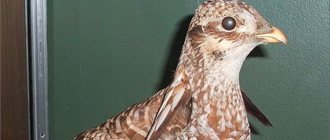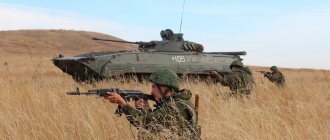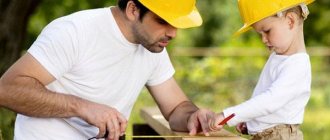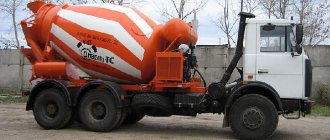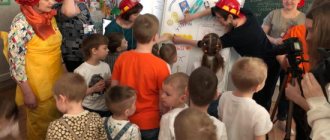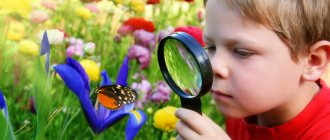Excursion to the forest with children. Walking summary
A walk with children in the forest. Synopsis “Where the miracle tree lives.”
A walk in the forest with your parents.
Author: Galina Vladimirovna Kostyrina, teacher of additional education, Municipal Budgetary Educational Institution Central Children's Theater, Karagaylinsky village. Purpose. This event may be of interest to teachers, educators and parents who care about joint family recreation and environmental education of children. The actual walk took place in a nearby grove from our locality. If you do not have the opportunity to walk through the forest with your children, you can take a walk in the park, where there is also a sufficient variety of trees and vegetation. Goal: To attract parents to joint walks, hikes with children, to make parents want to play, walk with them in the forest. Objectives: 1.Teach to see the beauty of nature. 2.Develop a culture of communication. 3. To form an interest in folk games and songs.
Teacher.
Good afternoon, dear children and dear parents!
Today, on this wonderful warm day, I invite you on an amazing journey. And where, you will find out by guessing the riddle. Who, as soon as it gets hot, will pull a fur coat over his shoulders? And the evil cold will come - Will it be thrown off your shoulders? (Forest.) Children and parents get up in pairs and all go together to the nearest forest. Teacher.
We approached the forest.
Remember what the edge of the forest is called. (Edge.)
Close your eyes, turn your faces to the sun, do you feel how it strokes you with its rays?
(Yes.)
Guys, what kind of sun is it?
(Children's answers.)
Let's go through the edge into the depths of the forest.
It is full of mysteries and secrets. Listen to the sounds of nature. What do you hear? (Children's answers.)
Animals and birds, lizards and frogs, beetles and butterflies live in the forest.
And how many berries and mushrooms there are here! Flowers look at us from the grass, inviting us to admire and rejoice in their beauty. Breathe the forest air. Why do you think there is such fresh and clean air in the forest? Children make assumptions; parents complement their answers. Teacher.
Right.
Plants living in water and on land, in forests and deserts, in mountains and on plains, depending on natural conditions, have different appearances, but they all saturate the air with oxygen. What are the tallest plants in the forest? (Trees.)
What trees grow in our forests?
(Children's answers.)
What are the names of trees whose leaves look like needles?
(Conifers.)
Name what coniferous trees do you know?
(Pine, spruce, cedar, fir, larch, juniper.)
What are the names of trees that lose their leaves in winter?
(Deciduous.)
Name the trees growing in deciduous forests.
(Birch, aspen, poplar, rowan, maple, linden, etc.)
Many trees are medicinal plants.
They give positive energy and cheerfulness to people. Today we will meet with some of them. Participants approach the birch tree.
Child. You will recognize me by a simple sign: There is no whiter tree in this world. Teacher.
Our first stop is Birch.
What an elegant tree! It’s not for nothing that they call her the white-trunked Russian beauty. Many songs, poems, and riddles are dedicated to this tree. Child.
Snow-white sundress, strict hairstyle. The first beauty is the Russian birch tree. Teacher.
Below the birch trunk is covered with dark, rough bark, and above it is white with black markings. Touch the white smooth bark. (Children and parents examine and stroke the bark, pay attention to the leaves.)
What do birch leaves look like?
(A triangle with jagged edges, like hearts.)
Birch is a coquette, every spring she puts on earrings and they sway in the wind.
What do you think they are for? (Children's assumptions.)
Earrings are birch flowers.
When they bloom, seeds form. The wind and birds will carry them through the forest, and where they fall, small birch trees will grow. Birch buds are used for medicinal purposes. Tar and activated carbon are made from birch wood. How many of you drank birch sap in the spring? Do you, parents, know how to collect birch sap so as not to harm the tree? (Answers from parents.)
According to Russian custom, round dances have always been held around birches, let us not break this tradition.
All participants lead a round dance to the song “There was a birch tree in the field...” Teacher.
Our next stop is Larch.
Child. Like pines, like fir trees, And in winter without needles. Teacher.
What a slender trunk this tree has, how fluffy its branches are!
(Tilts the branch and invites the children to examine it.)
Larch branches are covered with needles.
Are they prickly? (Children touch the needles.)
Larch needles are soft, delicate, silky.
How do they grow: one at a time or in bunches? (In bunches.)
That's right, several needles grow from one bud.
Have any of you seen needles on larch trees in winter? (No.)
Where do they go?
(In autumn they turn yellow and fall off.)
Indeed, the needles, or leaves, of this tree fall off in the fall, like those of deciduous trees.
That is why the tree was called larch. Larch, like pine and spruce, grows cones. They look like small balls. The cones contain seeds that birds love to feast on. Larch wood is very strong and durable. Houses built from larch logs last for many years. Larch is also a medicinal plant. Look closely at the trunk. Do you see the transparent droplets? This is resin - a resinous juice from which turpentine and aromatic oils are made. Touch a drop of resin and smell your fingers. What does resin smell like? (It has a pine smell, the resin smells like a Christmas tree.)
Let's collect last year's cones and fallen larch twigs, we can make something interesting out of them.
Participants collect cones, then approach the pine tree. Teacher.
At the next stop we are greeted by a pine tree.
Child.
I have longer needles than a Christmas tree. I am growing very straight in height. If I am not at the edge, the branches are only at the top... While you are looking at it, I will tell you about this tree.
Pines live 300 - 500 years. They can be found beyond the Arctic Circle, high in the mountains, in the taiga, and in the hot south. But pine cannot tolerate polluted air, so you rarely see it in the city. Pine is a light-loving plant; the lightest forest is a pine forest. In the east they believe that this tree brings happiness. In many countries, pine is a symbol of longevity and greatness. Pine is also known as a medicinal plant. The air in the pine forest has healing properties. Look at the trunk of a pine tree and tell me what you see. Participants examine the trunk of a pine tree, find drops of resin, and make assumptions about its medicinal properties. Then the pine cones and needles are collected. Everyone sits down to relax in the clearing. Teacher.
What other trees grow in our forests?
How different the leaves of different tree species are! Can you name a tree when you see its leaf? The game “Whose leaf?” is being played. (The teacher shows alternately the leaves of birch, oak, rowan, etc., the participants guess.) Teacher.
Let's remember the poems and riddles about these trees.
Parents ask riddles, children read poems about the trees of our region. They play outdoor games.
Teacher.
Now, walk around with your parents, look at the bark, branches, leaves of different trees, remember their names.
Stroke the trunks, press your cheek against them and smell them. Close your eyes and listen to the rustling of the leaves. Pay attention to who lives next to this or that tree, who flies to it, who crawls on it. Children and their parents walk through the forest looking at nature and talking. Teacher.
Did you like our trip?
(Yes.)
Real travelers - explorers are very observant.
Answer my questions: what plants besides trees grow in our forest? How do forest plants differ from those that grow on city streets? (Children's answers.)
And now it's time to return home.
We had such a fun time today! What do you think should be done to make this day memorable for a long time? (Children's suggestions.)
I suggest that you and your parents draw a picture about our journey and place it in the exhibition in order to watch and remember our journey. This will be your homework. See you again!
We recommend watching:
Scenario of cognitive leisure in the preparatory group Sports and musical leisure in the preparatory group Leisure for older preschoolers. Scenario Mathematical leisure in the preparatory group
Similar articles:
Entertainment for children of the preparatory group about work
Physical education leisure in the preparatory group in the winter in the hall
Entertainment on the theme “Russia” in the preparatory group in kindergarten
Scenario of a creative game program in kindergarten for children of the preparatory group
Theatrical entertainment in the preparatory group
Summary of an excursion around the world on the topic “Forest Tale
- What is a forest?
- What types of forests are there?
- How are they different from each other?
- Take a close look at the plants around you and determine which forest you are in.
- Good in the forest. The beautiful spruce trees are dozing.
- What other coniferous trees can be found in the forest?
- Pine is an evergreen tree up to 40-45 m high. Pine is a valuable tree species. It provides excellent building material, and from its resin and needles many substances and medicines necessary for humans are produced.
- What other trees grow in our forest?
- For many peoples, oak has long been considered the personification of power, strength, constancy, a symbol of strength and glory.
- By autumn, acorn fruits ripen on the oak tree. They are rich in starch. For many animals and birds, acorns are an excellent food.
The oak tree is especially famous for its bark, which contains tannins. A decoction prepared from it is used to rinse the mouth and throat for inflammation. Oak trees live up to 2 thousand years.
- Do forest plants interfere with each other's growth?
- The tiers of the forest are usually considered from top to bottom. Please name the plants of the first tier - floor, second, third and fourth.
- Now name the numbers of the floors - the tiers on which shrubs, mosses, trees, and herbs grow.
- Do you think the arrangement of plants in the forest on floors is random and why?
- Do you think plant roots grow in floors underground? If so, how?
- To which tier would you classify young and still low trees?
- Our walk through the forest continues. - Guys, look what is near the stump?
- Who lives in this house?
Tell us what you know about ants.
The anthill consists of twigs, dry leaves, and pieces of bark. It is no coincidence that the anthill is built this way; when it rains, water easily rolls off it. The importance of ants in the life of the forest is important. They distribute fruits and seeds of plants and destroy harmful insects. Each average ant nest destroys up to 2 million pests over the summer.
What insects can we find in the forest?
Guess my riddles.
Flies over the lawn, fusses over the flower - He shares the honey.
A helicopter landed on a daisy at the gate - Golden eyes - Who is it?
It flutters and dances over the flower, waving its patterned fan.
Guys, what benefits do insects bring?
An ordinary bee beats its wings 200 times per second. A bee manages to pollinate up to 7 thousand flowers per day. To collect 1 kg. To obtain honey, one bee needs to fly about 300 thousand kilometers and visit 19 million flowers
Dragonflies are beneficial insects because... they are aerial predators. Dragonflies grab flies, mosquitoes, butterflies and other insects in flight. A “rocker dragonfly” can eat 40 flies, mosquitoes or midges in two hours. Dragonflies must be protected.
Spends physical exercises with children
In the morning the butterfly woke up
She smiled and stretched! Once - she washed herself with dew. Two - she spun gracefully, Three - she bent down and sat down - On four - she flew away.
- Do only plants and insects live in the forest?
- Guys, when we enter the forest, the first people you meet are birds.
Guess what birds are greeting us?
Puzzles:
Black vest, red beret, Nose like an ax, tail like a stop.
From morning until late evening, the woodpecker works: resting his elastic tail on the trunk, clinging to his strong paws, he chisels the tree with a beak as strong as a chisel. A woodpecker knocks, which means that harmful ones will be destroyed.
All migratory birds are blacker, Cleans the arable land from worms,
Back and forth across the arable land, jump, And the bird’s name is...
Together we built a spring house for guests. Or rather, a palace. Come soon...
Starlings winter in warm countries. The starling selects the dwelling; if the female does not like it, then the birds look for another place. Having chosen a home, the birds clean it. Cover the bottom with straw, down, last year's grass, and make a depression in the middle of the nest.
Guys, what other birds can we meet in the forest?
What do you know about them?
What benefits do they bring?
Remember the benefits that birds bring by destroying pests. You should not disturb the chicks in the nests or take the eggs. If you accidentally uncover the nest, restore the previous camouflage of the nest so that the bird does not abandon it, but brings out the chicks. We go deeper into the forest.
Guys, who else can we meet in the forest?
Which of these animals lives in our forest? What other animals live in our forest? How are these animals protected?
